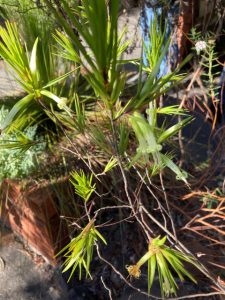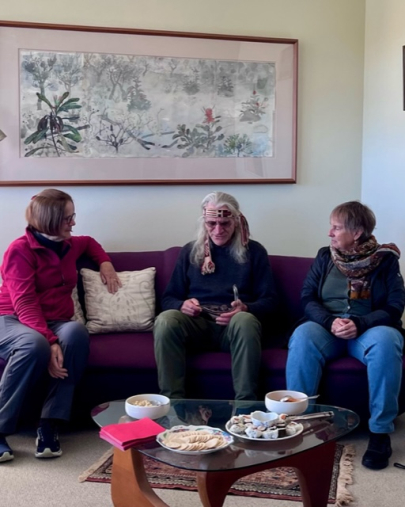This article has been republished from the July 2023 Northern Beaches newsletter, Caleyi
APS members had a very enjoyable and informative visit to Harry Loots’ native garden in Cremorne on a very crisp winter Wednesday in June. About 14 people attended.
The house was built by Harry’s father in the 1950s and Harry has been creating a naturalistic garden on this steeply sloping site, overlooking Middle Harbour and Primrose Park, for many years.
The first impression was of a planted council verge with very tall Xanthorrhoea species, two of which must have been 4-5 metres tall and very dramatic indeed.
There is a council planted water gum under which there are many heathland plants .
A graceful Persoonia and some pretty epacris species which were in blossom, Woollsia, with delightful white flowers. It is known as snow heath and grows in eastern Australia from NSW south coast as far as Queensland.
Phylotheca in bud, and some flowering Pimelia which had been seeded from an old straggly parent plant., and several flowering Crowea exalata. Many flannel flowers (Actinotus helianthi) .
Harry has had to deal with so many seedlings of Doryanthes excelsa (Gymea Lily) that he has to weed them out and give them away to gardeners.
On the Eastern side of the house the garden is very steep and had been originally road fill and clay. Considerable quantities of rocks has been placed in a relaxed terrace formation and planted out. The structural components of this area has been the planting of some advanced Banksia species, in particular a big old Banksia serrata and a Banksia ericifolia with large striking bright orange flowers.
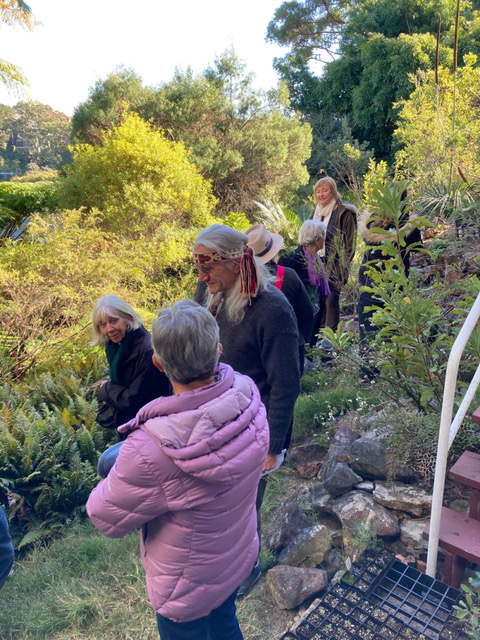
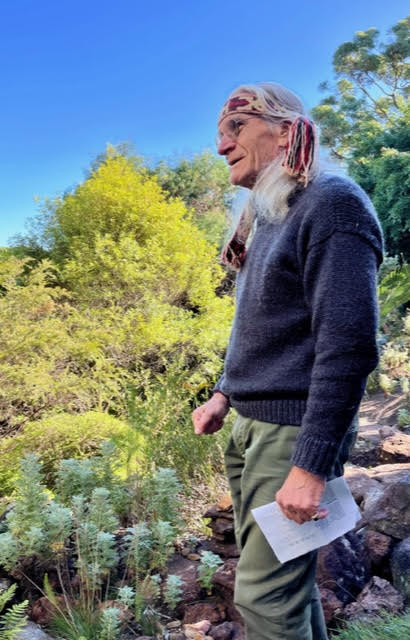
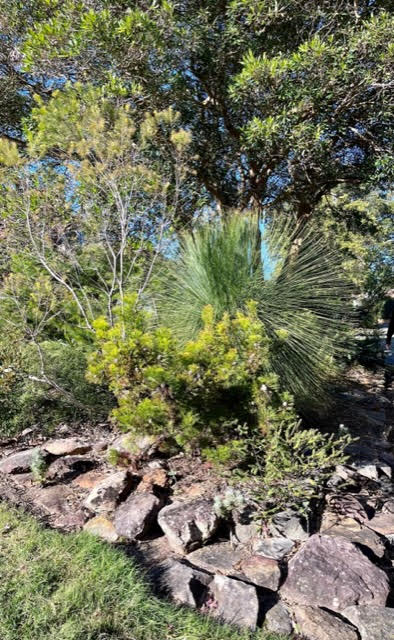
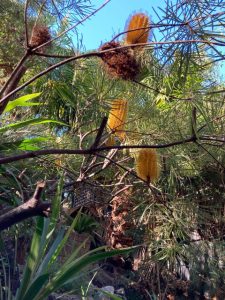
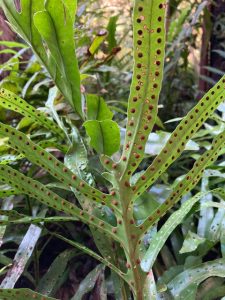
This has made a shady dry garden, and the area is filled with ferns, orchids and cordylines. A large patch of Microsorum diversifolium (kangaroo fern) has beautiful spores underneath the leaves. This rhizomatous fern only grows to be about a foot tall, but rapidly fills out a space.
There were a number of orchids attached to logs and old Xanthorrhoea trunks including Sydney rock orchid (Dendrobium kingianum) and much smaller dainty Dendrobium kingianum and a “tongue orchid “Dockrillia linguiformis .
The west facing back garden is extremely steep. There is a lovely green shady canopy from a “Cheese Tree” (Glochidion ferdinandi) and tall tree ferms (Cyathea cooperi). Nevertheless, many plants have made their home in the rocky crevasses and continue to self seed, such as Rulingia hermaniifolia which we saw was popping up everywhere flowing over contours and crevasses of the rocks. This plant occurs naturally in the Sydney sandstone and coastal regions and can form a delightful low groundcover with little white to pink star flowers and deep green wrinkled leaves.
Also planted Stylidium grass and Doodia ferns which are very hardy in sun or shade. Hovea lanceolatus, Darwinia fascicularis with delightful redbi-colourflowers. Also“Drumsticks”(Isopogon anethifolus), a black wattle (Acacia callicoma) and an unusual umbrella fern.
Harry has been propagating native plants from his garden in containers on the rock platform in the backyard, especially many little flannel flowers. They have been planted out and are thriving on the rock shelf in the sun.
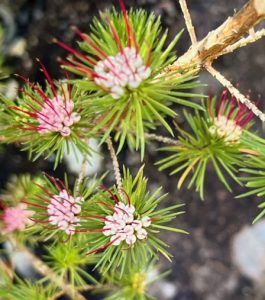
We are grateful for a chance to view this garden and for Harry’s expertise in discussing the native plants and the conditions they enjoyed. Also thanks to Lindy for a delicious and social morning tea. The view from the house down over the back garden gave a lovely different perspective of the canopy and the view to the harbour.
